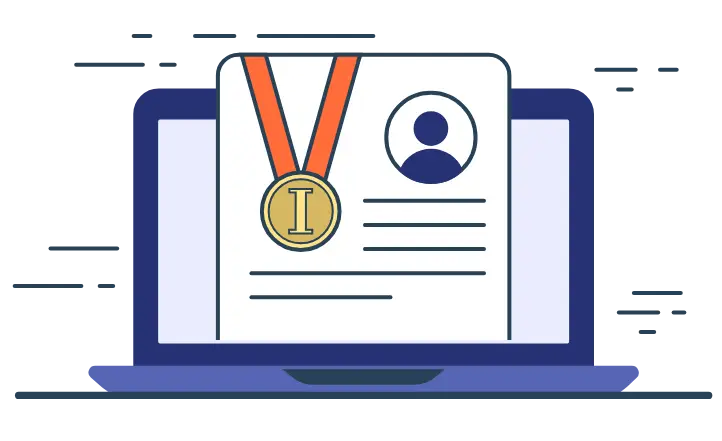TL;DR
- HR technology is transforming workforce management by centralising recruitment and employee administration.
- HRIS manages employee data, payroll, compliance, and performance, while ATS focuses on recruitment and candidate tracking.
- Integration of HRIS and ATS improves efficiency across the entire employee lifecycle, from hiring to retention.
- Businesses of different sizes benefit from customised adoption: small firms may prioritise ATS, while larger enterprises need both systems.
The way businesses manage their people has undergone a profound shift in recent years. Human resources are no longer confined to paperwork, compliance, or payroll-it has become a strategic function that shapes company culture, employee retention, and competitive growth. In 2025, this transformation is being driven by technology.
Organisations of every size now depend on recruitment software to manage recruitment, performance, benefits, compliance, and workforce analytics. The move away from manual spreadsheets and siloed processes towards integrated systems has not only saved time but has also improved the quality of decision-making.
Moreover, with remote and hybrid working becoming a standard model, HR departments face challenges in keeping track of employee productivity, engagement, and satisfaction. Without a robust system, managers can struggle to maintain consistency and ensure compliance across multiple locations. HR technology bridges this gap by centralising data and providing actionable insights.
At the heart of this transformation sit two powerful technologies: the Human Resource Information System (HRIS) and the Applicant Tracking System (ATS). While both are crucial, they serve different purposes, and choosing the right one-or the right blend-can mean the difference between operational efficiency and missed opportunities.
The global HRIS market is projected to reach $81.1 billion by 2029, up from $58.7 billion in 2024, reflecting a compound annual growth rate (CAGR) of 11.7%. This rapid growth highlights the increasing adoption of HR technology across organisations of all sizes [Source].

What Is HRIS (Human Resource Information System) and How Does It Work?
A Human Resource Information System (HRIS) is the backbone of modern HR operations. At its core, HRIS is designed to centralise employee data and streamline workforce management. It functions as a comprehensive platform that covers employee records, payroll, time tracking, benefits administration, compliance reporting, and performance management.
Unlike older HR methods, where information was scattered across filing cabinets or multiple software tools, HRIS acts as a single source of truth for all HR-related data. Maintaining clean and accessible records reduces errors, ensures legal compliance, and provides HR leaders with real-time insights into their workforce.
For businesses with growing teams, HRIS is particularly valuable. Imagine a company of 200 employees: without a centralised HR system, payroll might be handled in one tool, leave requests in another, and compliance documents in email folders. HRIS brings all of this under one roof, improving efficiency and reducing administrative burden.
Additionally, HRIS often includes self-service portals, enabling employees to update personal details, access payslips, or submit leave requests without relying on HR staff. This reduces administrative workload and empowers employees with more control over their information. Many HRIS systems also offer analytics dashboards, allowing managers to track trends such as turnover rates, absenteeism, and employee engagement metrics, helping in data-driven decision-making.
What Is ATS (Applicant Tracking System) and Why Do Businesses Use It?
While HRIS looks after employees once they join the organisation, the Applicant Tracking System (ATS) specialises in attracting and hiring the right people in the first place.
An ATS is software built to manage the end-to-end recruitment process. It enables HR teams and recruiters to post job vacancies, collect applications, screen CVs, schedule interviews, and track candidates through every stage of hiring.
Modern ATS platforms go beyond basic applicant management. They use AI-powered screening to filter large volumes of applications, integrate with job boards and LinkedIn, and even provide analytics to measure hiring efficiency. For companies facing talent shortages or dealing with high application volumes, an ATS is indispensable.
The benefits of Applicant Tracking Software are particularly pronounced in competitive markets where hiring the best talent quickly can make or break a business. ATS tools can automate repetitive tasks like sending acknowledgement emails to candidates or scheduling interviews, freeing recruiters to focus on high-value tasks such as candidate engagement and employer branding.
In addition, ATS platforms now increasingly include collaboration features that allow HR teams and hiring managers to provide feedback on candidates directly in the system, reducing delays and miscommunication. The integration of ATS with HRIS ensures that once a candidate is hired, their information is automatically transferred to the HRIS, eliminating duplicate data entry and enhancing accuracy.
HRIS vs ATS: What’s the Core Difference Between Them?
The main distinction lies in purpose. HRIS is designed to manage existing employees and the overall HR function, whereas the Applicant Tracking System is designed to streamline recruitment.
- HRIS = Employee management, payroll, compliance, performance, and workforce insights.
- ATS = Recruitment, candidate pipeline, job posting, application tracking, and interview scheduling.
While both may share minor overlaps, their focus areas are unique. Businesses need to identify whether their pain point lies in managing current employees or in attracting new ones before deciding between HRIS and ATS.
It’s also worth noting that the integration of both systems is becoming a standard practice in many organisations. Companies that adopt both HRIS and Applicant Tracking System often see improved efficiency throughout the entire employee lifecycle-from attracting top talent to retaining high performers. In practice, HRIS ensures smooth administration of the workforce, while ATS ensures the inflow of quality candidates who fit the organisation’s culture and goals.
HRIS vs ATS: Where Do They Overlap and What Are the Misconceptions?
A common misconception is that HRIS and ATS are interchangeable. Many people assume that one can fully replace the other. In reality, they overlap only in limited areas, particularly in onboarding and reporting. For example, an ATS may handle candidate onboarding once someone is hired, and an HRIS will then store that employee’s data for payroll and long-term management. This is where confusion arises.
Another misconception is that small businesses don’t need either system. In truth, even companies with fewer than 50 employees can benefit enormously-Applicant Tracking Software speeds up hiring, while HRIS reduces compliance risks and payroll errors.
Some organisations mistakenly believe that using an all-in-one HR software is always better. While hybrid solutions can work, they may lack the depth of features provided by specialised systems, particularly for large enterprises. Understanding the overlaps and differences ensures the business selects the right combination of tools for its specific needs, without unnecessary investment in redundant functionality.
What Key Features Set HRIS Apart from Applicant Tracking Systems?
To break it down further, let’s look at the features that distinguish one system from the other:
1. Payroll and Compliance
Handled exclusively by HRIS, not ATS. This includes tax filings, statutory compliance, and benefits administration.
2. Recruitment Pipeline
Managed by ATS, not HRIS. Includes job posting, candidate screening, and tracking applications.
3. Performance Reviews
HRIS tracks employee growth, feedback, and appraisal cycles.
4. Candidate Sourcing and Screening
Applicant Tracking Software filters CVs and helps shortlist candidates using AI algorithms.
5. Analytics
Both provide insights, but HRIS focuses on workforce analytics while ATS focuses on recruitment analytics, helping businesses optimise both hiring and retention strategies.
In addition, many HRIS platforms now integrate employee engagement modules, allowing surveys, pulse checks, and feedback collection directly from the system. ATS systems, on the other hand, increasingly offer employer branding tools, helping businesses attract top talent by showcasing company culture, values, and benefits directly on job portals.
What Are the Benefits of HRIS vs ATS for Small, Medium, and Large Businesses?
For small businesses, an ATS can save significant time during recruitment, but a lightweight HRIS is often more impactful for managing compliance and payroll. Automating basic tasks ensures that even small teams remain efficient and error-free.
For medium-sized businesses, the decision becomes more complex. Companies scaling rapidly often use both: ATS for streamlined recruitment and HRIS for managing a growing workforce. This combination helps in maintaining data accuracy while supporting HR strategy across multiple departments.
For large enterprises, HRIS is non-negotiable. With hundreds or thousands of employees, payroll, compliance, and workforce insights are impossible without it. However, recruitment at scale also requires a robust ATS, often integrated into the HRIS. The ability to track recruitment metrics alongside workforce analytics enables HR leaders to make strategic decisions, such as workforce planning and succession management.
Moreover, the adoption of HRIS and ATS can improve employee satisfaction, as tasks such as leave approvals, payroll, and performance reviews become more transparent and streamlined. This, in turn, contributes to higher retention rates and a more motivated workforce.
How Much Do HRIS and ATS Cost?
Pricing depends on factors such as business size, required features, and vendor.
- HRIS Pricing: Typically charged per employee per month, ranging from £5 to £25 depending on complexity. Advanced systems with compliance and analytics features may cost more.
- ATS Pricing: Can be subscription-based or per job post. Small businesses might pay a few hundred pounds monthly, while enterprise ATS solutions can cost thousands.
Hidden costs, such as implementation, integration, and training, also need consideration. Businesses often underestimate these.
It is also worth considering the return on investment (ROI): while upfront costs may seem high, the efficiency gained from automating payroll, compliance, and recruitment can lead to significant long-term savings. Reduced hiring time, lower turnover, and fewer compliance penalties all contribute to the overall financial benefit of adopting these systems.
In What Real-World Scenarios Should You Choose HRIS or ATS?
A start-up hiring its first 20 employees will likely prioritise an ATS to quickly build its initial team without administrative overhead.
A scale-up expanding from 50 to 200 employees will need both systems to manage recruitment and HR operations efficiently.
An established enterprise with 1,000+ employees may use a sophisticated HRIS with integrated ATS features to streamline hiring and workforce management at scale.
Additionally, industry-specific needs influence the choice. For example, tech companies with high turnover might rely heavily on ATS to ensure constant hiring, while healthcare providers may prioritise HRIS for strict compliance tracking.
Do You Actually Need Both HRIS and ATS for Your Business?
The short answer: it depends. If recruitment is your biggest challenge, ATS should be your priority. If employee management and compliance are pain points, HRIS is essential. Many modern platforms now offer hybrid solutions that combine HRIS and ATS features in one. While these can be cost-effective, they may not be as specialised as standalone tools.
Businesses should assess their current pain points, workforce size, and growth trajectory before deciding. The goal is to ensure seamless management of both recruitment and employee lifecycle without redundancy or excessive cost.
What Are the Best HR Software Options That Combine HRIS and ATS?
Modern HR software providers increasingly offer platforms that integrate both HRIS and ATS functionalities, providing a seamless experience for HR teams. Choosing the right software depends on factors such as company size, budget, scalability, and the specific features required. Some of the most popular options include:
BambooHR: Known for its intuitive interface and excellent HRIS capabilities, BambooHR also offers ATS add-ons, making it ideal for small to medium-sized businesses. Its strength lies in automating routine HR tasks while giving managers clear insight into employee metrics.
Workday: A leading enterprise solution, Workday combines comprehensive HRIS and recruitment features. Large organisations benefit from its advanced analytics, reporting tools, and global compliance capabilities.
Rippling: A modern HR platform that integrates HR and IT functions. Rippling allows businesses to automate onboarding, payroll, and recruitment in one place, reducing duplication and administrative overhead.
Zoho People: Budget-friendly HRIS with ATS capabilities, particularly suitable for small businesses or start-ups. It supports basic HR functions while streamlining recruitment workflows.
When choosing a platform, it’s important to evaluate not just the features but also integration capabilities, vendor support, and scalability. A growing business may start with a basic ATS and HRIS, but as employee numbers increase, the platform must be able to handle complex reporting, analytics, and compliance needs without requiring a full system overhaul.
How Is HR Tech Evolving with AI, Automation, and New Innovations?
Artificial Intelligence (AI) is rapidly transforming both HRIS and Applicant Tracking Systems, enhancing the way businesses manage their workforce and hire talent. In recruitment, AI-powered ATS tools can automatically screen resumes, rank candidates based on qualifications, and even detect potential biases in the hiring process.
For HRIS, predictive analytics are becoming commonplace. These systems can forecast turnover, identify employees at risk of disengagement, and even suggest targeted interventions to improve retention. Automation further reduces the administrative burden, handling repetitive tasks such as payroll processing, compliance alerts, and onboarding workflows.
Additionally, innovations like mobile access and self-service portals are enhancing employee experience. Staff can now submit leave requests, access payslips, or provide feedback on performance reviews directly through mobile apps. This not only improves transparency but also increases engagement, as employees feel more empowered and connected to their organisation.
The ongoing evolution of HR technology indicates that companies adopting AI and automation early can gain a significant competitive advantage. By integrating intelligent analytics with human decision-making, businesses can make more informed, strategic HR choices while maintaining a more agile workforce.
HRIS vs ATS: Which One Fits Your Business Best?
Ultimately, the choice between HRIS and ATS depends on the specific needs and stage of your business. Start-ups and small companies might prioritise an ATS to manage recruitment efficiently, while medium-sized enterprises often benefit from adopting both systems as they scale. Large corporations typically require comprehensive HRIS solutions integrated with ATS capabilities to manage their extensive workforce effectively.
Decision-makers should evaluate their current pain points, recruitment demands, compliance requirements, and long-term growth plans. A hybrid or integrated solution may offer the best of both worlds, providing recruitment efficiency, workforce management, and reporting capabilities without redundancy.
Selecting the right system is more than just a software choice-it is a strategic investment that can influence employee satisfaction, retention, and overall business performance.
Conclusion
Choosing the right HR software-whether HRIS, ATS, or a combined solution critical for streamlining HR operations, improving recruitment efficiency, and enhancing employee management. HRIS empowers organisations to centralise payroll, compliance, and workforce data, while Applicant Tracking Software ensures the best candidates are hired quickly and effectively. For businesses of all sizes, understanding the distinctions, benefits, and use cases of each system is essential for making informed decisions.
Among the many solutions available, iSmartRecruit stands out for its seamless integration of HRIS and ATS features. Its intuitive interface, AI-driven recruitment tools, and advanced analytics allow businesses to manage the entire employee lifecycle efficiently. Whether you are a small start-up aiming to hire quickly or a large enterprise managing thousands of employees, iSmartRecruit offers flexibility, scalability, and actionable insights that simplify HR management while saving time and resources. Choosing iSmartRecruit ensures smarter hiring and smarter workforce management.
Frequently Asked Questions (FAQs)
1. Is HRIS the same as ATS?
No, HRIS manages existing employees and compliance, while ATS is focused on recruitment and candidate tracking.
2. Can a small business use ATS or HRIS?
Yes, even small teams benefit from ATS speeds up hiring, while HRIS prevents payroll and compliance errors.
3. Can HRIS and ATS be integrated?
Yes, many platforms allow integration, enabling smooth data transfer from recruitment to employee management.
4. Which is more expensive: HRIS or ATS?
Costs vary, but ATS tends to be cheaper initially, while HRIS may cost more due to broader features and analytics capabilities.
5. Should a growing business invest in both?
If recruitment and HR management are equally critical, adopting both (or a hybrid solution) is the most efficient path.













